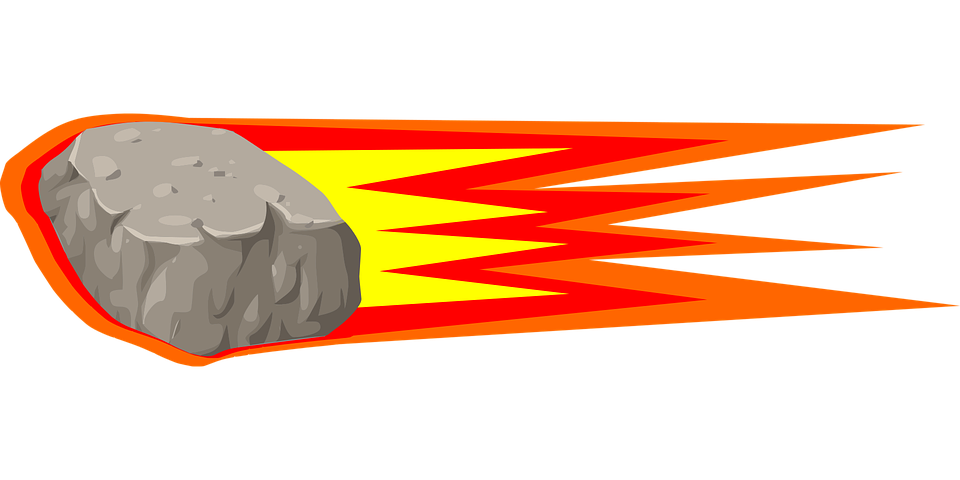
This image has format transparent PNG with resolution 960x480.
You can download this image in best resolution from this page and use it for design and web design.
Meteor PNG with transparent background you can download for free, just click on download button.
A meteoroid is a small rocky or metallic body in outer space.
Meteoroids are significantly smaller than asteroids, and range in size from small grains to one-meter-wide objects. Objects smaller than this are classified as micrometeoroids or space dust. Most are fragments from comets or asteroids, whereas others are collision impact debris ejected from bodies such as the Moon or Mars.
When a meteoroid, comet, or asteroid enters Earth's atmosphere at a speed typically in excess of 20 km/s (72,000 km/h; 45,000 mph), aerodynamic heating of that object produces a streak of light, both from the glowing object and the trail of glowing particles that it leaves in its wake. This phenomenon is called a meteor or "shooting star". A series of many meteors appearing seconds or minutes apart and appearing to originate from the same fixed point in the sky is called a meteor shower. If that object withstands ablation from its passage through the atmosphere as a meteor and impacts with the ground, it is then called a meteorite.
An estimated 15,000 tonnes of meteoroids, micrometeoroids and different forms of space dust enter Earth's atmosphere each year.
Almost all meteoroids contain extraterrestrial nickel and iron. They have three main classifications: iron, stone, and stony-iron. Some stone meteoroids contain grain-like inclusions known as chondrules and are called chondrites. Stony meteoroids without these features are called "achondrites", which are typically formed from extraterrestrial igneous activity; they contain little or no extraterrestrial iron. The composition of meteoroids can be inferred as they pass through Earth's atmosphere from their trajectories and the light spectra of the resulting meteor. Their effects on radio signals also give information, especially useful for daytime meteors, which are otherwise very difficult to observe. From these trajectory measurements, meteoroids have been found to have many different orbits, some clustering in streams (see meteor showers) often associated with a parent comet, others apparently sporadic. Debris from meteoroid streams may eventually be scattered into other orbits. The light spectra, combined with trajectory and light curve measurements, have yielded various compositions and densities, ranging from fragile snowball-like objects with density about a quarter that of ice, to nickel-iron rich dense rocks. The study of meteorites also gives insights into the composition of non-ephemeral meteoroids.
In this page you can download free PNG images: Meteor PNG images free download